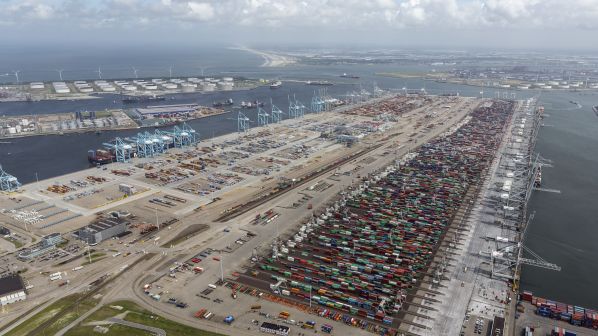IRJ on the Connecting Europe Express: Four associations have called for greater connectivity between Europe’s ports and rail networks as the Connecting Europe Express visited Rotterdam and Antwerp on October 3 and 4.
The European Sea Ports Organisation (ESPO), the European Rail Infrastructure Manager (EIM), the European Rail Freight Association (ERFA) and the Community of European Railway and Infrastructure (CER) say that increasing the share of rail freight is an important part of reaching the EU’s Green Deal objectives, and should be a central focus of the European Year of Rail.
As most European ports are located close to cities that already have congested road networks, the associations say that more freight travelling to and from ports must be transferred to rail. The Connecting Europe Facility II in particular should promote rail projects that improve connectivity with seaports, as this will bring direct efficiency gains for a large share of rail freight.
“Improving the last-mile should be a first priority for getting more goods on rail, in terms of interoperability, data exchange, operations and infrastructure,” says ESPO secretary-general, Ms Isabelle Ryckbost. “In Europe we see a wide diversity of rail management systems in European ports. We need a level-playing-field and equal access to public funding for the necessary infrastructure investments, regardless of whether the port managing body or the national rail infrastructure manager is responsible for the rail infrastructure inside the port.”
“Infrastructure managers consider rail-port connectivity as an essential tool to create the much-needed modal shift for freight, in order to reply to the ambitious environmental policies of the European Commission,” says EIM executive director, Ms Monika Heiming. “The funding opportunities for strategic investments in rail-port connections under the new Connecting Europe Facility II are therefore much welcomed. Infrastructure managers will continue to improve the coordination between rail and ports with all stakeholders involved.”
“In order for rail freight to become more attractive to end users, rail freight [operators] must have access to a good quantity and quality of capacity,” says ERFA secretary general, Mr Conor Feighan. “As key gateways for freight, it is therefore essential that ports have infrastructure in place which facilitates the development of a competitive rail freight market.”
“Improvement of last-mile connections must be accompanied by interoperable freight standards on the network and the revision of the TEN-T Regulation is an opportunity to close the gaps and bring ports and rail corridors closer together,” says CER executive director, Dr Alberto Mazzola.

